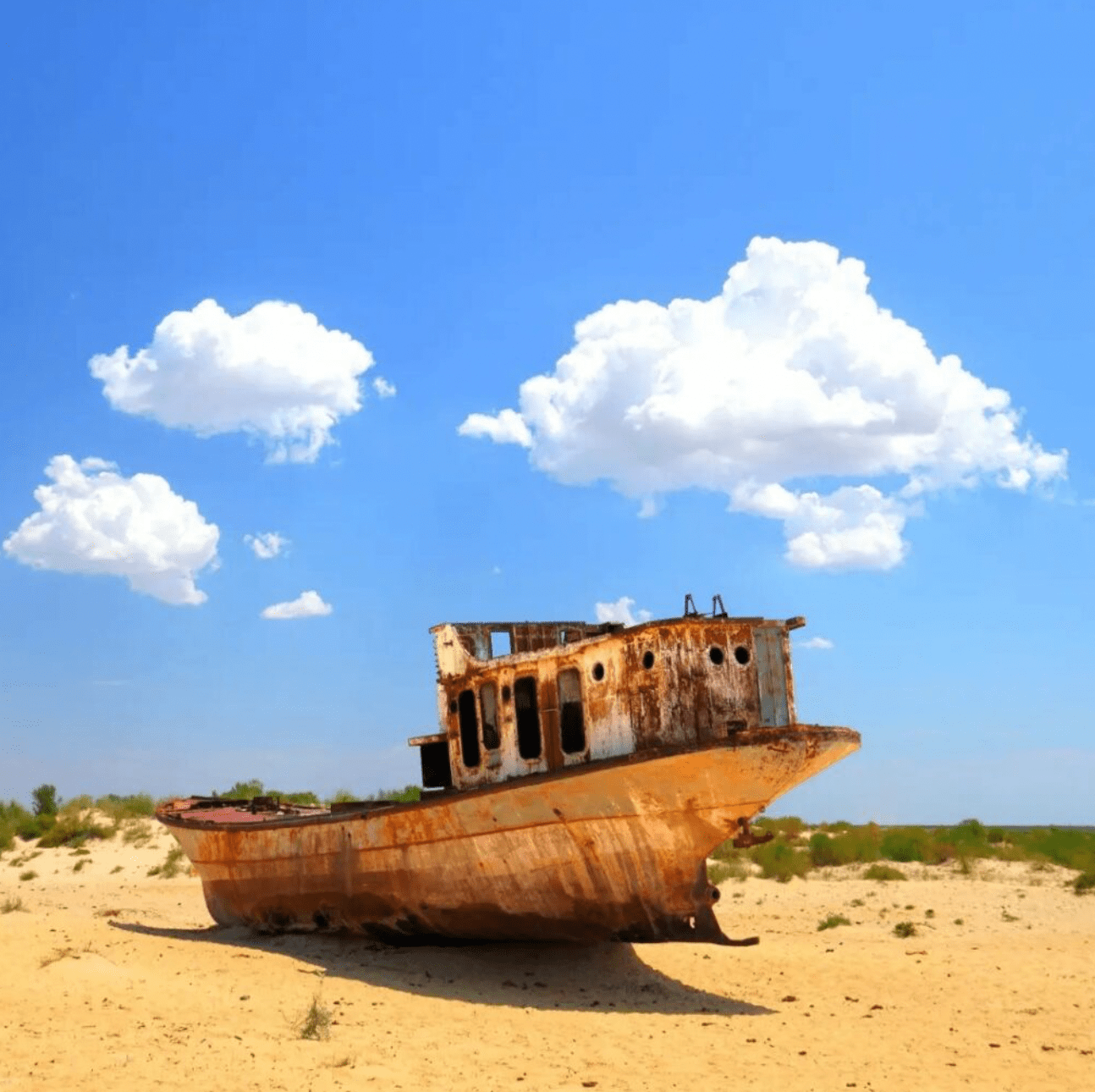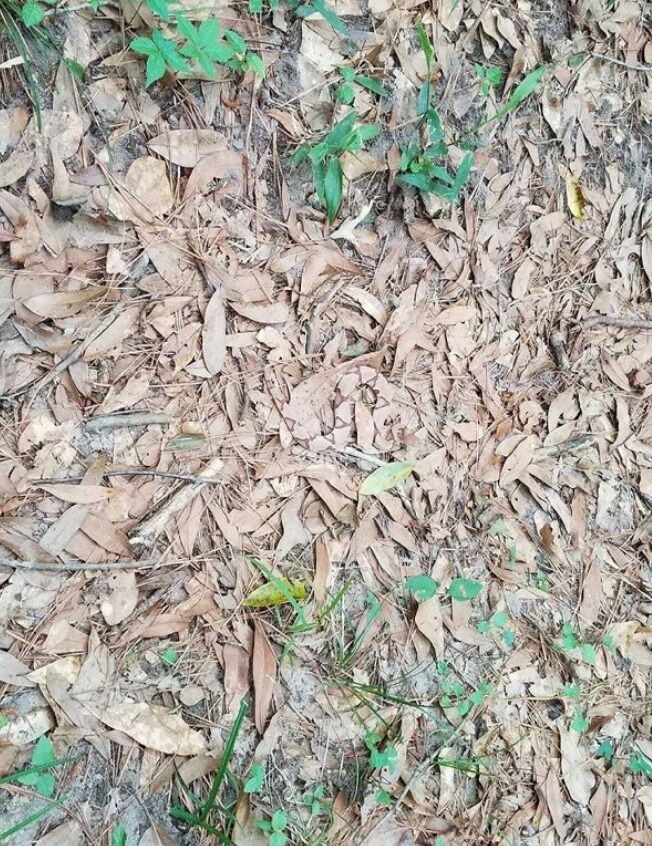The Aral Sea, which is now only a small portion of its former 26,000 square mile size, was once the fourth-largest inland water body in the world. It is located in Central Asia between Kazakhstan and Uzbekistan. Given how big that ancient sea was, even Alexander the Great talked about his attempts to cross it. However, the Aral Sea has been split into two smaller bodies of water and is now only 10% the size it once was.
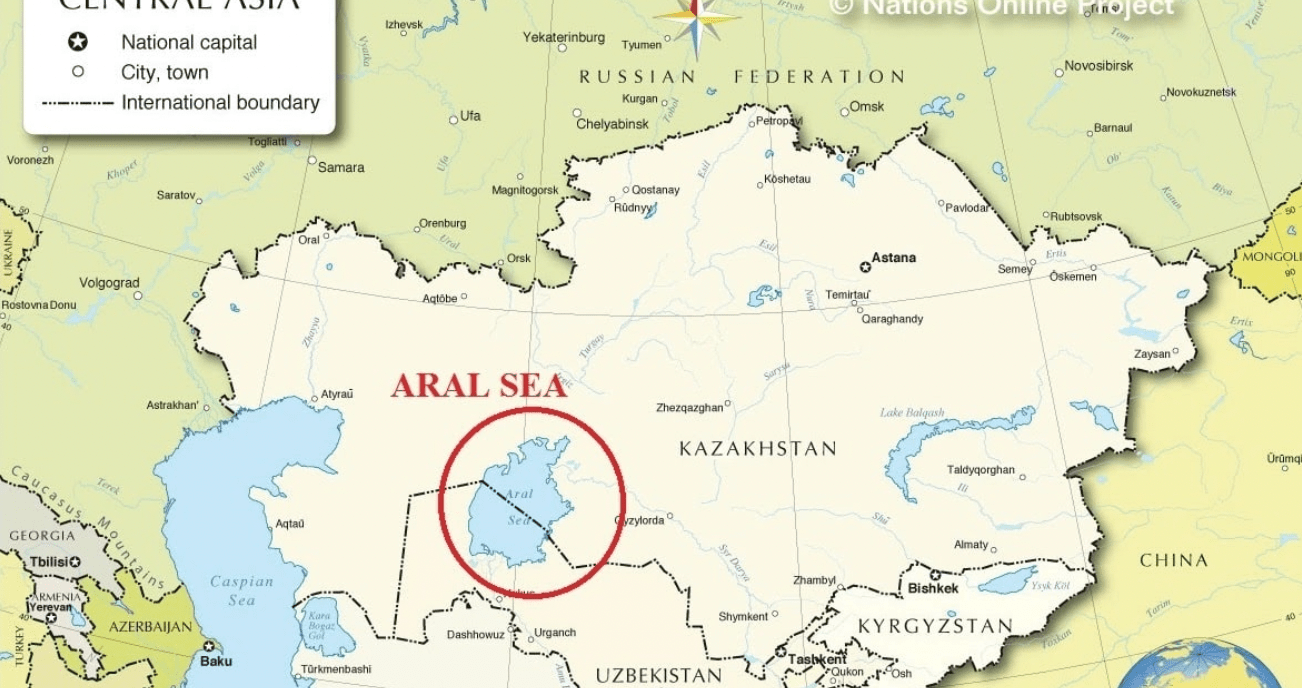
This significant change was brought about by human effort. In the 1960s, the Soviet government diverted water from the two rivers that supplied the Aral Sea to irrigate cotton and rice crops in the region. As a result, the sea began to rapidly shrink; by the 1980s, it had lost half of its initial volume.
The outcomes were terrible. Fishing-dependent communities saw a collapse, leaving the once-bustling ports that surrounded the shore stranded in a sea of sand. These days, the Aral Sea is known as the “Desert of Ghost Ships,” with rusty hulls and crumbling infrastructure dotting the barren landscape.
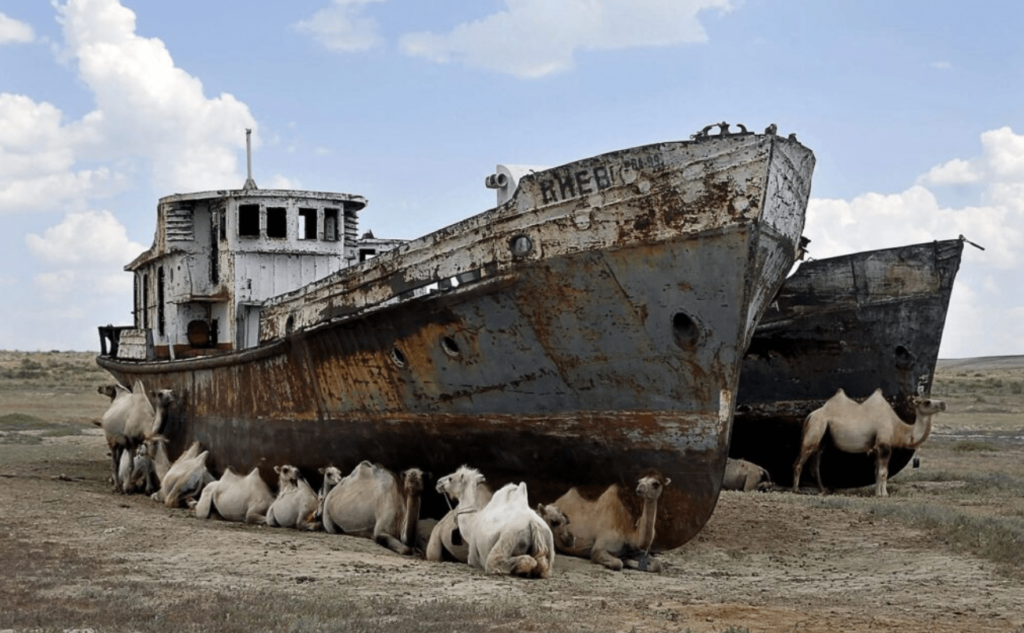
The environment has also been significantly impacted by the disappearance of the Aral Sea. The exposed seabed’s dangerous dust, which contains salt, pesticides, and other pollutants, is to blame for the region’s current serious health problems, including cancer and respiratory diseases.
For years, the Aral Sea has been undergoing restoration, with mixed outcomes. The water level in the northern half of the sea has somewhat risen over the preceding ten years as a result of a dam built on the Kazakh side of the sea. Meanwhile, the southern part of the sea is still a dead wasteland that shows little signs of recovery.
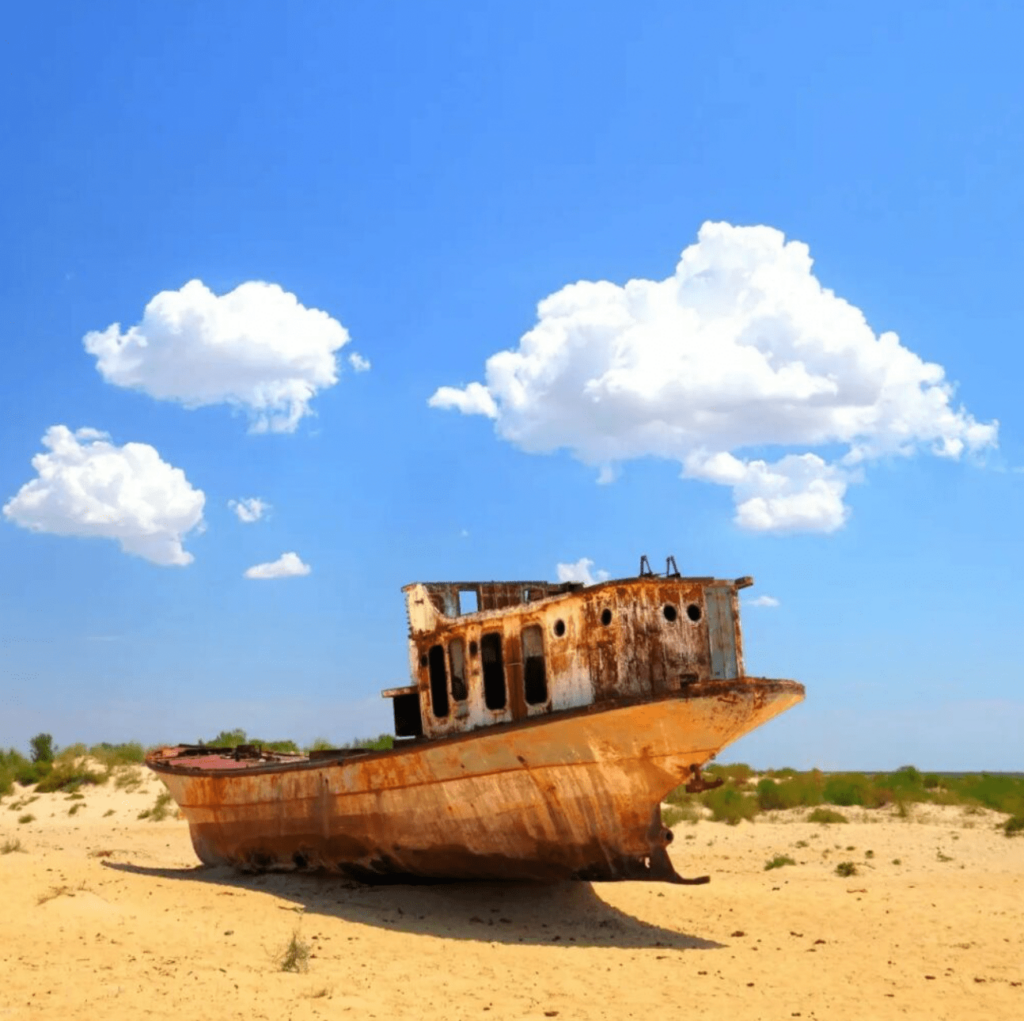
The Aral Sea’s past serves as a cautionary tale about the potential damage that human activities can inflict to the ecosystem. It serves as a reminder that the consequences of our choices can be extensive and long-lasting.
